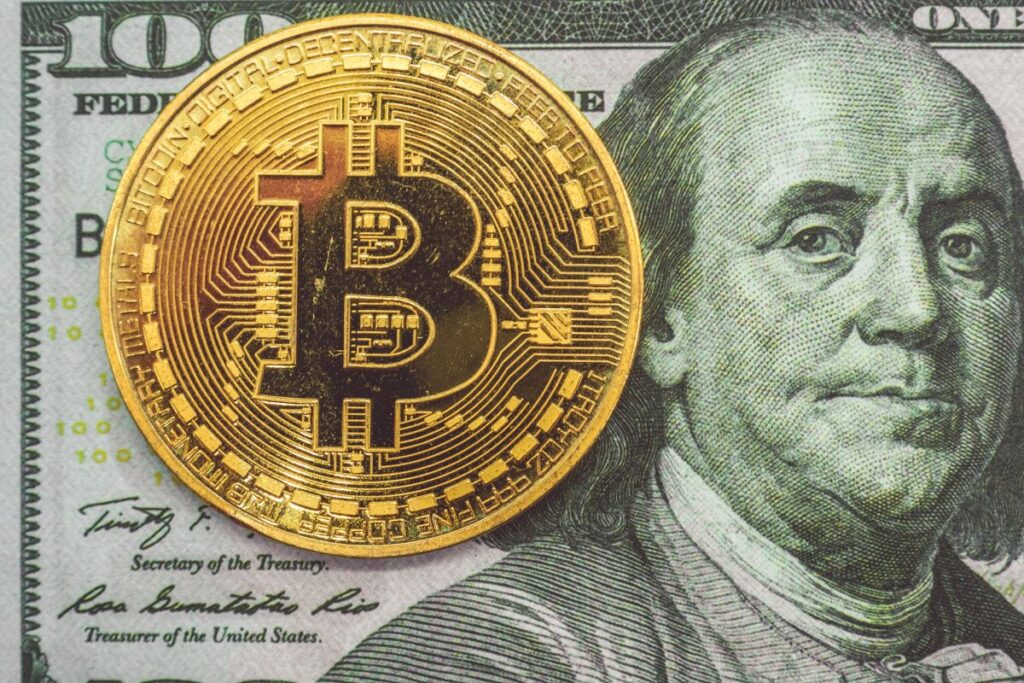Cryptocurrencies can rise and fall in value. Like, all the way down. Here are a few things that influence those prices if you are curious why.
What factors influence the price of a cryptocurrency? Need is the first thing that springs to mind. The higher the interest, the higher the price; conversely, the lower the demand, the lower the price. Many factors determine how the price of bitcoin swings, and we will look at them in detail in this post.
Node Count

Source: unsplash.com
The node count indicates the number of active accounts in a network. Merely conduct a Google search or visit the currency homepage to obtain this information.
But why is the number of nodes significant? For starters, it demonstrates the community’s strength. Many nodes indicate a robust community, and a strong community boosts the currency’s chances of surviving a possible crisis.
Second, a significant number of nodes might reflect a network’s strength and decentralization, both of which are essential considerations in crypto.
Note: The node count can be used to determine whether a bitcoin is appropriately priced. Compare the currency’s node count and overall market capitalization to more widely used money. This method is not entirely correct because network architecture varies, but it offers a good concept of how cryptos work and how node count affects the price.
Cost Of Production
Another element that determines cryptocurrency price is the cost of manufacture. Miners create new tokens and validate further transaction processing every day using specialized hardware or platforms. Minors are paid with digital receipts and a networking fee for their contributions.
The network connection of the miner allows decentralized cryptocurrencies to continue to function. As a result, if mining expenses rise, the value of bitcoin may increase as well. It is pointless for miners to invest their time and money mining new cryptocurrency tokens if the incentives are insufficient to cover their costs and turn a profit.
This is not always the case, and it is not consistent throughout all cryptos, so do your homework before investing.
Cryptocurrency Exchanges
When a token is available on a high proportion of crypto exchanges, it attracts more individuals to buy and use it. You will make payment for each transfer if you ever need two or more transactions to swap any cryptocurrency token, increasing the investment cost.
Competition

Source: unsplash.com
With new tokens being issued every day, the number of available cryptocurrencies grows. There are meme coins, soccer team coins, celebrity coins, and many other options available. There are also potential bitcoin initiatives among such new coins that could transcend a current limitation and develop an extensive user network.
Regulation By The Government
Certain countries dislike cryptocurrency’s decentralized and unregulated nature and are looking for ways to manage it. Setting a tax on any fiat currencies people use to cash out their bitcoins is the simplest method to regulate crypto.
However, because this tax only applies to specific tokens, anyone who wants to cash out their winnings can switch to a different coin.
Some countries have determined that outlawing Bitcoin, Ethereum, and a few other currencies is the best approach to regulate the crypto industry. Regrettably, imposing additional regulations against cryptocurrencies in a country with a significant number of crypto users will negatively influence its price.
Scarcity
In theory, if the cryptocurrency supply is limited, the price will rise as fewer coins are available for purchase. If just 40% of the currencies are in circulation and the remaining 60% are retained, the price may fall as additional coins become available.
Existing coins are “burned” by some cryptocurrency projects by transferring them to an unfixable location on the blockchain. This allows them to keep a tight grip on the available supply.
The Internet And Social Media
The value of cryptocurrency is recognized to fluctuate due to social media excitement. It also works other ways, as news can drop or raise prices. There is also the impact of influential members of the crypto community, like Elon Musk, who has altered the value of the DOGE coin on multiple occasions, whether intentionally or not.
Although social media is chaotic, there is data to be found. Crypto exchanges, for example, provide regular updates on blockchain money or warn users about crypto frauds.
The Values Of Cryptocurrencies Are Highly Unstable
Many elements influence bitcoin value, and there is no foolproof method to know it, which is why financial experts recommend investing just what you can afford to give up in cryptocurrencies and doing as much research as possible before opening your wallet.
How Much Does One Bitcoin Cost?
Several variables influence the cost of a single bitcoin, along with supply and demand, competition, and regulation. Investor perceptions of cryptocurrency are also affected by recent news events.
The real value of one bitcoin may be calculated by calculating the average marginal revenue of a bitcoin at any particular time, depending on the bonus, power price, mining hardware power efficiency, and mining difficulty. Bitcoin reached an all-time high of $68,790.13 on November 10, 2024.
Will The Price Of Bitcoin Rise?
The desire for Bitcoin’s cryptocurrency is expected to rise as it approaches its maximum limit. The price of a single bitcoin is increasing due to greater demand and limited supply.
Additionally, more organizations participate in Bitcoin, stabilizing its markets and promoting it as a viable investment option. The utility and price of bitcoin cryptocurrency will rise as it becomes more used as a medium for retail transactions.
What Effect Does Bitcoin Supply Have On Its Price?

Source: unsplash.com
Bitcoin’s bitcoin circulation has been decreasing since its inception in 2009. The cryptocurrency goes through a halving event every four years, through which miner earnings are reduced by half on aggregate. Bitcoin prices have risen due to a combination of falling supply and increased demand.
Final Thoughts
Bitcoin is still a fledgling asset class, even though it has been for more than a decade. Its value is governed by a complicated set of factors such as manufacturing costs, competitiveness, and regulatory changes.
Other factors, including the levels of complexity of the cryptocurrency’s algorithms and conflicts on its blockchains, can also have a part in deciding its price due to the cryptocurrency’s technical underpinnings. For creating a free account for learning advanced trading technology, you can visit this site by tapping on it.



